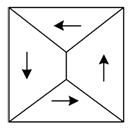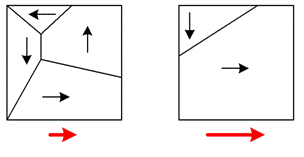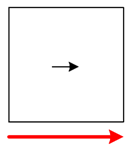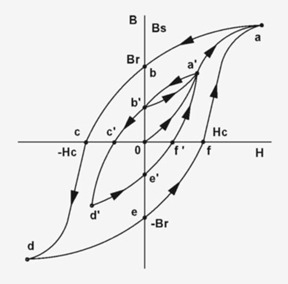


Experiments with magnets and our surroundings
Twelve Fundamentals of Magnetism
9. Magnetic Domains and Saturation
a. Links for this topic
http://en.wikipedia.org/wiki/Magnetic_domainsb. What is a magnetic domain?
http://en.wikipedia.org/wiki/Saturation_(magnetic)
Ferromagnetic materials are made up of magnetic domains, tiny volumes of material which are all magnetized in the same direction.
c. What happens when the material is immersed within an external magnetic field?
An unmagnetized piece of material would have each of its domains pointing in random direction, so that when summed together, they cancel each other out and there is no net external magnetic field produced by the material.

When the material is immersed within an external magnetic field, the domains that are aligned with the material will begin to grow, the others will begin to shrink.

This will continue as the magnitude of the external magnetic field increases, until all of the magnetic domains within the material are aligned with the external field. At this point, the material is said to be magnetically saturated since there are no more domains that can become aligned.

When saturated, the magnetized material has a distinct North and South pole.
As the external magnetic field is reduced to zero, whatever magnetic domains remain aligned will create a residual flux density, Br, which the material will exhibit as its retained magnetization.
The material would then be considered to be magnetized.

d. What else happens?
Energy is required to magnetize the material by:
a) creating the external magnetic field, and by
b) magnetically moving the magnetic domain walls within the material (reorienting the atoms within the magnetic domains)NOTE: As the domains grow or shrink or reorient themselves, heat is produced which is an energy loss. This is often overlooked when individuals are trying to determine energy changes in magnets.